Osteoporosis prevention is a multifaceted approach that combines nutrition, physical activity, medical screening, and lifestyle choices to maintain bone strength and reduce fracture risk. If you’re worried about brittle bones, you’ve landed in the right spot. This guide walks you through every step you need to take-from the foods on your plate to the tests your doctor may order-so you can protect your skeleton for years to come.
TL;DR - Quick Takeaways
- Aim for 1,200mg of calcium and 800-1,000IU of vitaminD daily.
- Do weight‑bearing exercise (e.g., brisk walking, resistance training) at least 3times a week.
- Get a bone mineral density (BMD) scan after age50 (or earlier if risk factors exist).
- Use the FRAX tool to estimate 10‑year fracture risk and discuss medication if risk is high.
- Quit smoking, limit alcohol, and keep a healthy weight.
What Is Osteoporosis?
Osteoporosis is a disease where the skeleton becomes porous and fragile, making fractures more likely even from minor falls. The World Health Organization defines it by a bone mineral density (BMD) that is 2.5 standard deviations below the young adult mean (T‑score ≤‑2.5). In Australia, about 1 in 3 women and 1 in 8 men over 60 will experience an osteoporotic fracture.
Key Risk Factors to Watch
Understanding what pushes your bones toward weakness helps you target prevention. Major risk factors include:
- Age - bone turnover speeds up after menopause for women and gradually declines for men.
- Low calcium or vitaminD intake.
- Sedentary lifestyle - lack of weight‑bearing activity accelerates bone loss.
- Smoking and excess alcohol (≥3 drinks/day).
- Family history of osteoporosis or fractures.
- Certain medications (e.g., corticosteroids, anticonvulsants).
Nutrition: Building Bone From the Inside Out
Bone tissue is a living matrix that needs minerals and vitamins to remodel properly. Below are the top nutrient players.
Calcium is a mineral that constitutes about 40% of bone mass and is essential for bone formation and remodeling. Adults 19‑50years need 1,000mg/day; women over 50 and men over 70 should aim for 1,200mg. Sources include dairy (milk, yoghurt, cheese), fortified plant milks, leafy greens (kale, bok choy), and almonds.
Vitamin D is a fat‑soluble vitamin that enhances calcium absorption in the gut and regulates bone turnover. Sunlight exposure supplies most of it, but dietary intake is crucial in higher latitudes like Perth during winter. Recommended daily intake is 800-1,000IU; foods include fatty fish (salmon, mackerel), egg yolk, and fortified cereals.
Other supportive nutrients:
- Magnesium (300-400mg) - co‑factor for vitaminD activation; found in nuts, seeds, and whole grains.
- Vitamin K2 (90‑120µg) - directs calcium to bones rather than arteries; abundant in fermented foods like natto and certain cheeses.
Exercise: Stressing Bones the Right Way
Weight‑bearing exercise is a type of physical activity that forces you to work against gravity, stimulating bone formation. It includes brisk walking, jogging, stair climbing, dancing, and resistance training with free weights or machines. Guidelines from the Australian Physical Activity Survey recommend at least 150minutes of moderate‑intensity activity plus two sessions of muscle‑strengthening exercises per week.
Why it works: Mechanical load creates micro‑strains in bone, signaling osteoblasts (bone‑building cells) to lay down new matrix. Over time, this increases BMD and improves balance, reducing fall risk.
Medical Screening: Know Where You Stand
Screening pinpoints silent bone loss before a fracture occurs.
Bone mineral density (BMD) test is a non‑invasive scan, usually by dual‑energy X‑ray absorptiometry (DXA), that measures bone mass at the hip and spine. A T‑score of ‑1 to ‑2.5 indicates osteopenia (low bone mass), and ≤‑2.5 confirms osteoporosis.
FRAX tool is a web‑based calculator that estimates a person’s 10‑year probability of a major osteoporotic fracture using clinical risk factors. Input includes age, sex, weight, height, previous fractures, glucocorticoid use, smoking, alcohol, and BMD if available. In Australia, a 10‑year risk ≥20% for major fracture often triggers pharmacologic therapy.
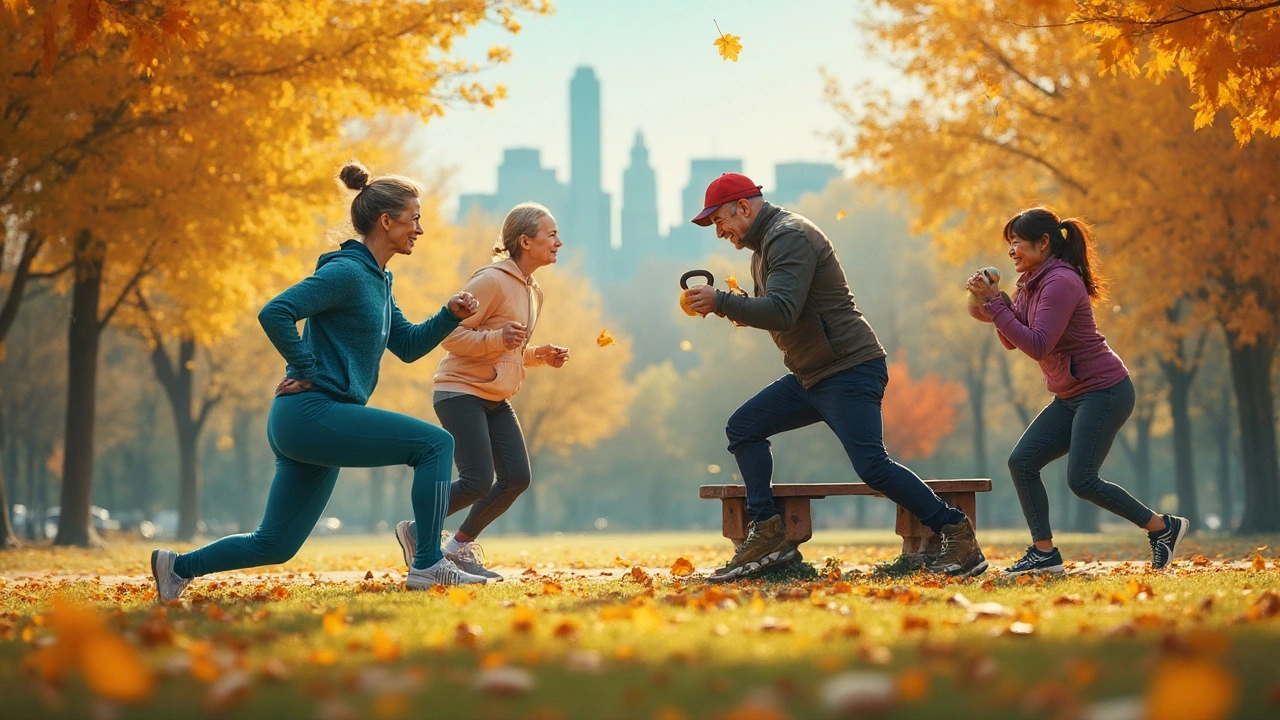
When Lifestyle Isn’t Enough: Medication Options
If your fracture risk crosses treatment thresholds, doctors may prescribe bone‑strengthening drugs.
Bisphosphonates are a class of medications (e.g., alendronate, risedronate) that inhibit osteoclast activity, slowing bone resorption. They reduce vertebral fracture risk by up to 50% and are usually taken weekly or monthly.
Hormone replacement therapy (HRT) is a treatment that supplies estrogen (with or without progesterone) to post‑menopausal women, helping maintain bone density. HRT is considered when symptoms of menopause are also present, but cardiovascular and cancer risks must be weighed.
Other options include selective estrogen receptor modulators (SERMs), denosumab, and parathyroid hormone analogs. Your physician will match medication to age, kidney function, and personal risk profile.
Putting It All Together: A Practical Action Plan
Below is a one‑page checklist you can print and stick on your fridge.
- Track calcium intake: aim for 1,200mg/day. Use a food diary or app.
- Ensure vitaminD: 800-1,000IU/day via sunlight, diet, or supplement.
- Exercise regularly: 30minutes brisk walk + two resistance sessions weekly.
- Get a BMD scan at 50years (or earlier with risk factors).
- Use the FRAX calculator after your scan; discuss results with your GP.
- If FRAX ≥20% or T‑score ≤‑2.5, ask about bisphosphonates or HRT.
- Quit smoking, limit alcohol to ≤2 drinks/day, and maintain a BMI of 20‑24.
Comparison of Key Bone‑Health Nutrients
| Nutrient | RDA (Adults) | Top Food Sources | Supplement Form |
|---|---|---|---|
| Calcium | 1,200mg | Milk, fortified soy milk, yoghurt, cheese, kale, almonds | Calcium carbonate (500mg), calcium citrate (250mg) |
| VitaminD | 800-1,000IU | Salmon, mackerel, fortified cereal, egg yolk, sunlight | VitaminD3 (cholecalciferol) 1,000IU softgel |
| Magnesium | 350-400mg | Pumpkin seeds, black beans, quinoa, whole‑grain bread | Magnesium citrate 200mg |
| VitaminK2 | 90‑120µg | Natto, Gouda cheese, hard cheeses, chicken thigh | MK‑7 100µg |
Beyond Bones: How Preventing Osteoporosis Improves Overall Health
Strong bones support mobility, independence, and confidence. Reducing fracture risk also lessens hospital stays, lowers healthcare costs, and protects mental well‑being-falls are a leading cause of anxiety and depression in seniors.
Next Steps for Different Readers
- Young adults (20‑39): Focus on establishing calcium‑rich habits and regular weight‑bearing workouts.
- Perimenopausal women: Add vitaminD and consider a BMD baseline; discuss HRT if menopausal symptoms are present.
- Men over 50: Prioritize protein intake, maintain resistance training, and schedule a DXA scan.
- People with chronic steroid use: Call your doctor for early BMD testing and possible prophylactic bisphosphonate therapy.
Frequently Asked Questions
How much calcium do I really need each day?
Adults aged 19‑50 should aim for 1,000mg; women over 50 and men over 70 need 1,200mg. Spread intake throughout the day for better absorption.
Can I get enough vitaminD from sunlight in Perth?
Perth’s high UV index provides ample vitaminD in summer, but winter months, indoor jobs, and sunscreen use can limit synthesis. A modest supplement (800‑1,000IU) is usually recommended year‑round.
What’s the difference between osteopenia and osteoporosis?
Osteopenia is a T‑score between ‑1 and ‑2.5, indicating lower‑than‑ideal bone mass but not yet fracture‑prone. Osteoporosis is a T‑score ≤‑2.5 and carries a high fracture risk.
Do bisphosphonates have side effects?
Common issues include mild stomach upset, heartburn, or rare jaw osteonecrosis. Taking the pill with plenty of water and staying upright for 30minutes reduces gastrointestinal problems.
How often should I repeat a BMD scan?
If your first scan is normal, repeat every 2‑3years. With osteopenia or on medication, a yearly scan helps gauge treatment effectiveness.
Is weight‑bearing exercise enough for older adults?
It’s a cornerstone, but combine it with balance training (e.g., tai chi) to lower fall risk. Strengthening the core and lower limbs adds extra protection.
Can I rely on supplements alone?
Supplements fill gaps, but they don’t replace the bone‑stimulating effect of exercise or the diagnostic value of a BMD test. Use them as part of a broader plan.
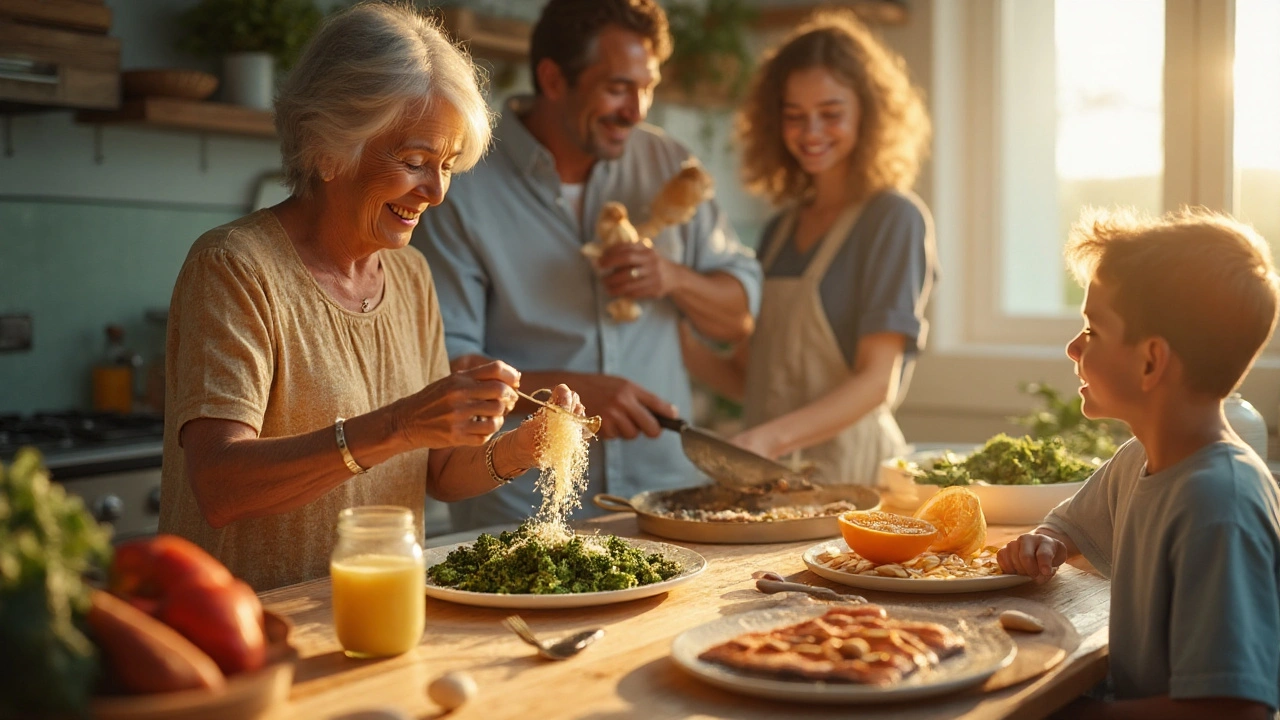
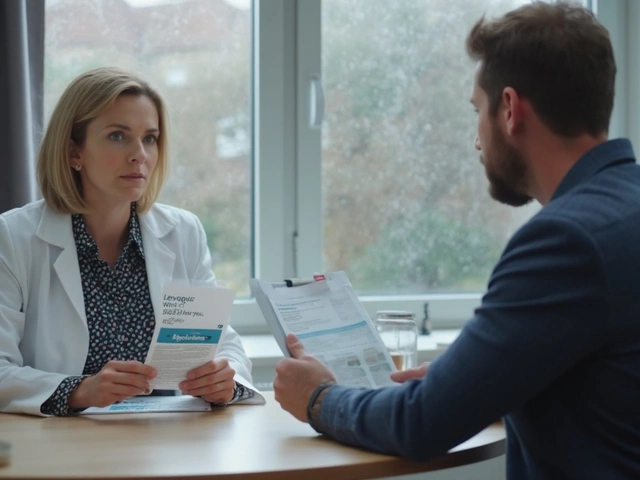 Levaquin Antibiotic: Key Facts, Side Effects, and Safer Alternatives
Levaquin Antibiotic: Key Facts, Side Effects, and Safer Alternatives
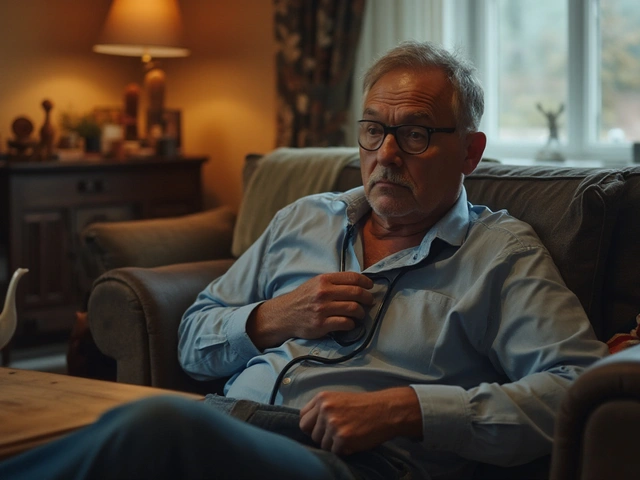 Understanding the Link Between Heart Arrhythmias and Sudden Cardiac Arrest
Understanding the Link Between Heart Arrhythmias and Sudden Cardiac Arrest
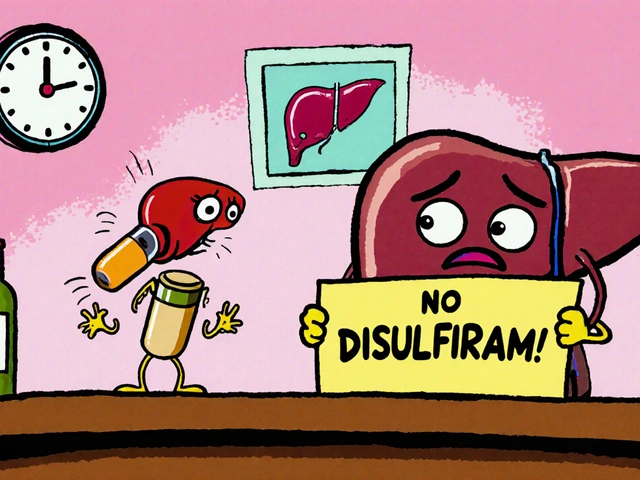 How Disulfiram Helps Treat Alcohol-Induced Liver Disease
How Disulfiram Helps Treat Alcohol-Induced Liver Disease
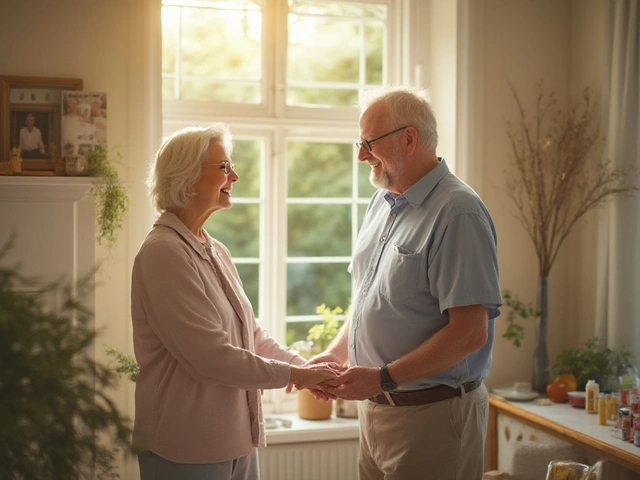 Alfacip: Benefits, Dosage, and Real Results of Alfacalcidol Supplement
Alfacip: Benefits, Dosage, and Real Results of Alfacalcidol Supplement
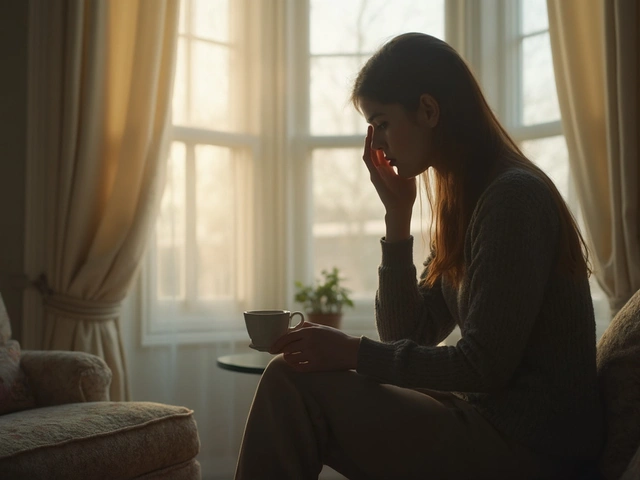 Why Acetaminophen Helps with Social Pain: Surprising Research Insights
Why Acetaminophen Helps with Social Pain: Surprising Research Insights
anshu vijaywergiya
September 28, 2025 AT 12:28Hey folks, imagine your bones as a grand orchestra – each nutrient and movement is an instrument that needs to be perfectly tuned. Calcium is the violins, Vitamin D the brass, and resistance training the percussive beat that keeps the rhythm alive. Start your day with a calcium‑rich breakfast like fortified soy milk or a bowl of oatmeal topped with almonds, then soak up some sunlight (or a modest supplement) for that essential D‑boost. Remember, consistency beats intensity; a short walk after lunch and a set of squats three times a week will do wonders. And don’t forget regular BMD scans – they’re the sheet music that tells you if the symphony is on point. 🎶 Keep your bone health crescendo going, and you’ll stay standing strong for the encore!
Stay motivated and share your progress – we’re all in this concert together.
ADam Hargrave
October 2, 2025 AT 10:04Oh sure, because everyone just loves counting calcium like it’s a Netflix binge. 🙄
Michael Daun
October 6, 2025 AT 07:40yo the guide is solid but i’d add that you can get calcium from tofu and sardines too not just dairy. also try vitamin d drops if u don’t get enough sun. keep it simple and stay consistent.
Rohit Poroli
October 10, 2025 AT 05:16From a biomechanical perspective, the mechanotransduction pathways activated during weight‑bearing activities upregulate osteoblastogenesis, thereby enhancing bone mineral density. Incorporating plyometric drills alongside traditional resistance training can synergistically amplify these anabolic signals. Additionally, ensuring adequate plasma concentrations of 25‑hydroxyvitamin D optimizes calcium absorption efficiency, which is crucial for maintaining the hydroxyapatite lattice integrity. Finally, periodic DXA assessments provide quantitative feedback loops for calibrating intervention intensity.
William Goodwin
October 14, 2025 AT 02:52Friends, think of your skeleton as the foundation of a majestic castle 🏰 – you wouldn’t build it without strong bricks and mortar! Load your diet with calcium‑laden foods, let the sun kiss your skin for vitamin D, and give those bones a daily workout with brisk walks or kettlebell swings. A quarterly BMD scan is like a royal inspector confirming the walls are sturdy. And remember, smoking and excess booze are the rogue dragons you must slay to keep the fortress intact. Stay regal, stay strong! 🌞💪
Isha Bansal
October 18, 2025 AT 00:28Let us commence with an unabashed exposition of the paramount importance of linguistic precision when disseminating health‑related guidance. The original composition, whilst thorough, is marred by a profusion of syntactic redundancies and lexical pleonasms that obfuscate rather than elucidate. One must eschew the complacent deployment of phrases such as “very important” when “crucial” suffices, thereby conserving the reader’s cognitive bandwidth. Furthermore, the indiscriminate use of bold tags for every subheading creates a visual cacophony; a judicious hierarchy of typographic emphasis would be more aesthetically pleasing. In addition, the recurrent insertion of the phrase “in conclusion” is superfluous and detracts from the fluidity of the narrative. Regarding the nutritional tables, the omission of units for certain micronutrients engenders ambiguity; all entries should be accompanied by their respective milligram or microgram designations. The recommendation to obtain vitamin D from “sunlight” ought to be qualified with latitude, season, and skin phototype considerations, lest the advice be misapplied. Moreover, while the guide rightly advocates for weight‑bearing exercise, it neglects to mention balance‑training modalities such as Tai Chi, which are indispensable for fall prevention in the elderly. The discourse on pharmacotherapy, albeit informative, would benefit from a more nuanced discussion of contraindications, particularly in patients with renal insufficiency. Lastly, the persistent use of the Oxford comma is inconsistent; adherence to a single style guide is imperative for professional integrity. In summation, a rigorous editorial overhaul-encompassing syntactic streamlining, typographic discipline, comprehensive unit specification, and stylistic uniformity-will elevate this manuscript from a cursory overview to an exemplar of evidence‑based health communication.
Ken Elelegwu
October 21, 2025 AT 22:04My dear readers, allow me to articulate the quintessential elegance of preventative osteology. One must, with cultivated discernment, curate a regimen wherein calcium intake is harmonized with vitamin D acquisition, thereby orchestrating an optimal milieu for osteoblastic activity. Moreover, the integration of resistance training furnishes a mechanical stimulus indispensable for skeletal fortification. It would be remiss not to extol the virtues of periodic densitometric evaluation, which serves as a scholarly audit of one's bony architecture. In this fashion, one may transcend the banalities of commonplace health advice and ascend to a realm of enlightened prophylaxis.
Gene Nilsson
October 25, 2025 AT 19:40It is with a sense of profound moral duty that I address the paramount importance of adhering to the prescribed calcium and vitamin D guidelines. Failure to comply may result in grievous skeletal deterioration, a fate which no conscientious individual should endure. Let us therefore commit to regular exercise, diligent supplementation, and routine BMD screening, lest we become the architects of our own infirmity.
Vintage Ireland
October 29, 2025 AT 16:16Hey all, just wanted to say that I’ve started adding a splash of almond milk to my morning cereal and doing quick stair climbs at work. It’s been surprisingly easy to stick with, and I already feel a bit more energetic. Keep sharing your tips – it helps keep the motivation alive!
Anshul Gupta
November 2, 2025 AT 13:52Honestly, this guide is just a rehash of everything the internet already knows. If you’re looking for fresh insights, you won’t find them here. Also, the emphasis on “stop smoking” is a given – it’s not groundbreaking material. The only thing slightly useful is the reminder about vitamin D supplements in winter, but even that is common knowledge.
Maryanne robinson
November 6, 2025 AT 11:28Wow, thank you for the enthusiastic overview! I love how you highlighted the “orchestra” metaphor – it really makes the science feel alive. I’ve started tracking my calcium intake with an app and set a reminder for a short walk after lunch. It’s amazing how small, consistent actions can build a solid foundation for our bones. Keep the positivity flowing; it’s contagious! 🎉
Erika Ponce
November 10, 2025 AT 09:04Good point, ADam. The guide is simple and straight to the point, which is helpful for beginners.
Danny de Zayas
November 14, 2025 AT 06:40Nice summary, Michael. I’ll try adding some tofu to my meals and keep the walks short but steady.
John Vallee
November 18, 2025 AT 04:16Dear community, allow me to elaborate on the multifaceted merits of a comprehensive bone‑health strategy. Firstly, the synergistic relationship between calcium and vitamin D cannot be overstated; without adequate vitamin D, calcium absorption plummets, rendering dietary intake moot. Secondly, the incorporation of high‑impact activities such as jump rope or plyometric lunges serves to stimulate osteogenic pathways far more effectively than low‑intensity marching. Thirdly, regular DXA scans provide a longitudinal dataset that enables clinicians to tailor pharmacologic interventions with surgical precision. Moreover, one must not neglect the psychosocial dimension: confidence in one’s skeletal integrity reduces fear‑of‑fall, thereby encouraging greater mobility and, in turn, reinforcing bone density. Lastly, addressing comorbidities such as chronic steroid use or endocrine disorders is essential; otherwise, even the most diligent regimen may falter. In sum, a holistic approach-encompassing nutrition, exercise, screening, medication, and mental well‑being-constitutes the gold standard for osteoporotic prophylaxis.
Brian Davis
November 22, 2025 AT 01:52Great guide, William! I’d add that using a standing desk can also help with weight‑bearing activity throughout the day, which is a subtle yet effective way to keep those bones engaged.
Lauren Ulm
November 25, 2025 AT 23:28While the recommendations seem solid, one might wonder why pharmaceutical companies are so eager to push bisphosphonates when natural methods could suffice. It feels like a hidden agenda to keep us dependent on costly meds. 🤔
Michael Mendelson
November 29, 2025 AT 21:04It is evident that only an elite few truly grasp the nuanced interplay of endocrine pathways and mineral homeostasis; the average reader should defer to professional counsel.
Ibrahim Lawan
December 3, 2025 AT 18:40Excellent points about screening, Gene. I’d also suggest that patients on chronic steroids schedule a BMD test annually to catch any rapid loss early.
Just Sarah
December 7, 2025 AT 16:16In accordance with established medical protocols, it is advisable to maintain a daily calcium intake of approximately 1,200 mg, supplemented by 800–1,000 IU of vitamin D; adherence to these parameters has been demonstrated to mitigate osteoporotic risk effectively.
Anthony Cannon
December 11, 2025 AT 13:52Well‑structured guide; concise and to the point.